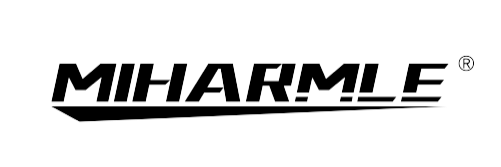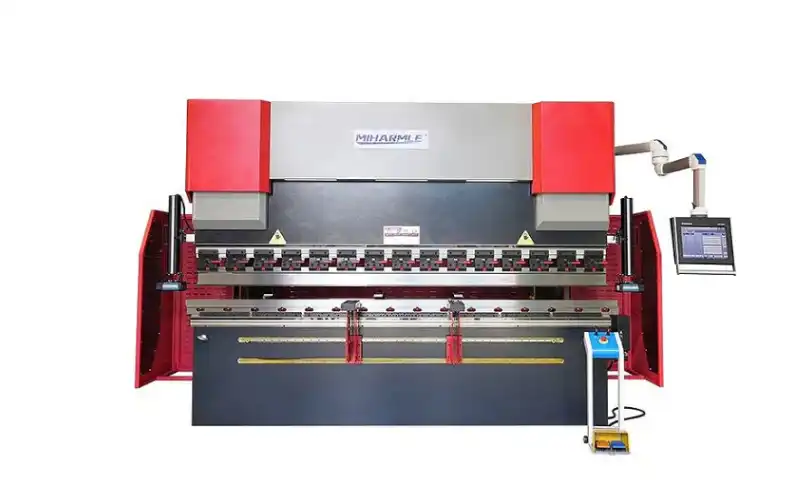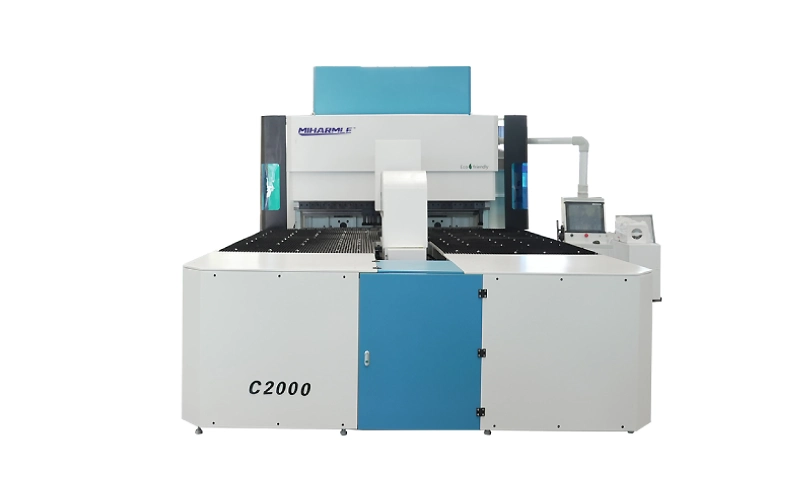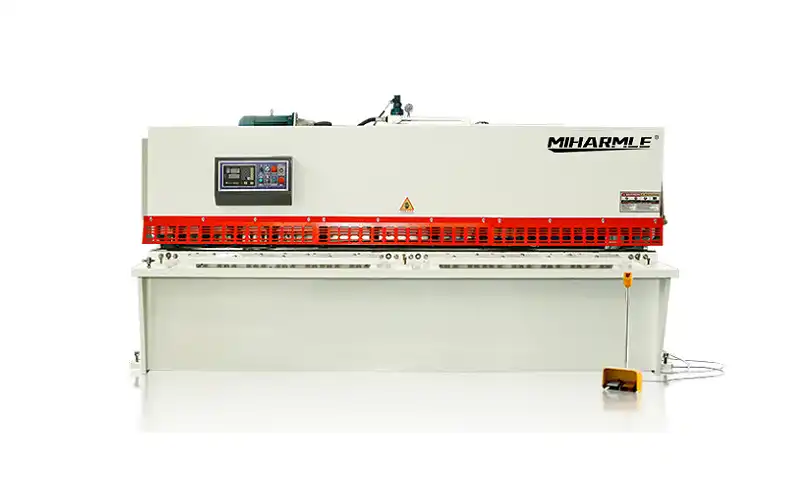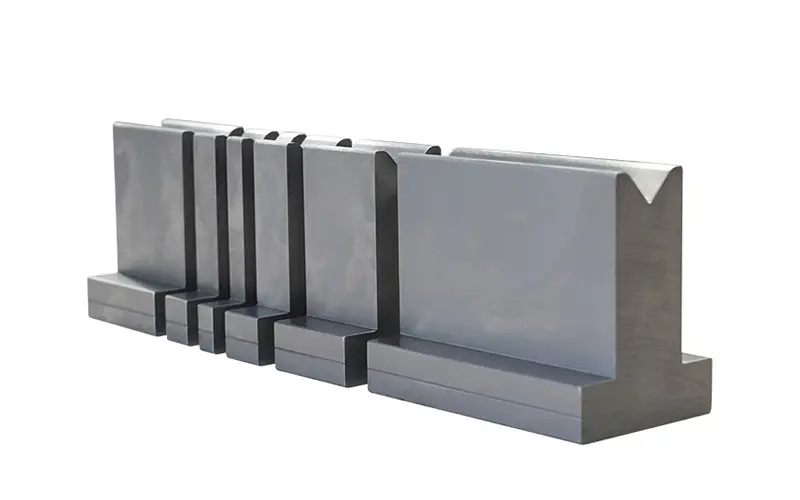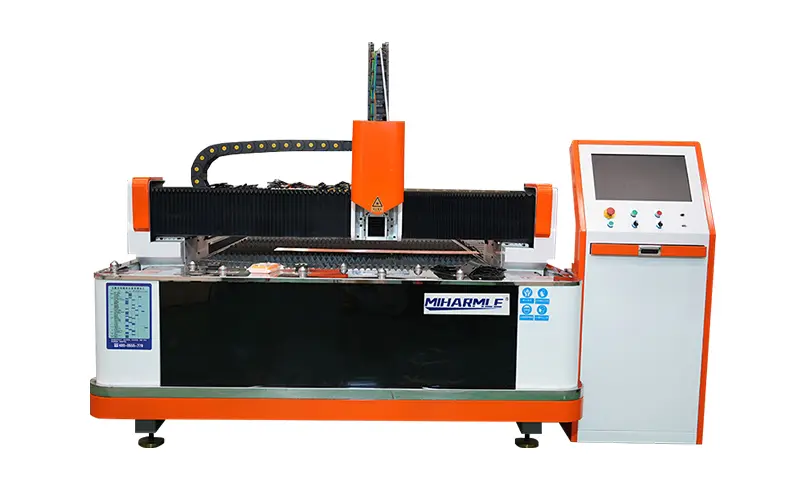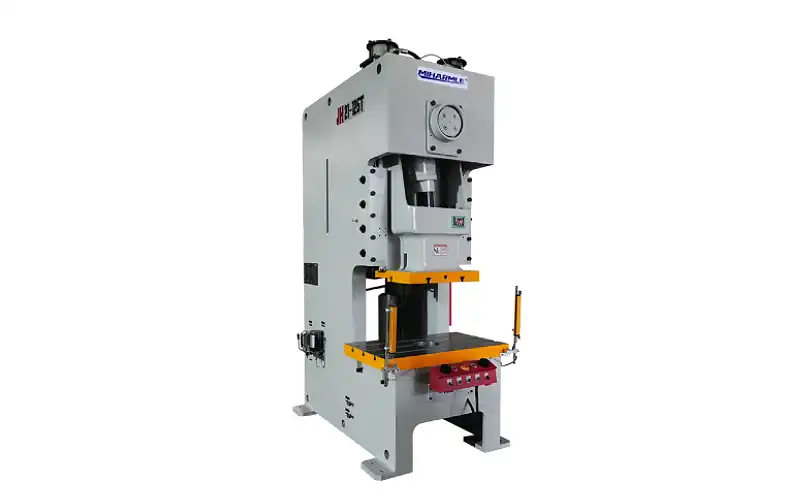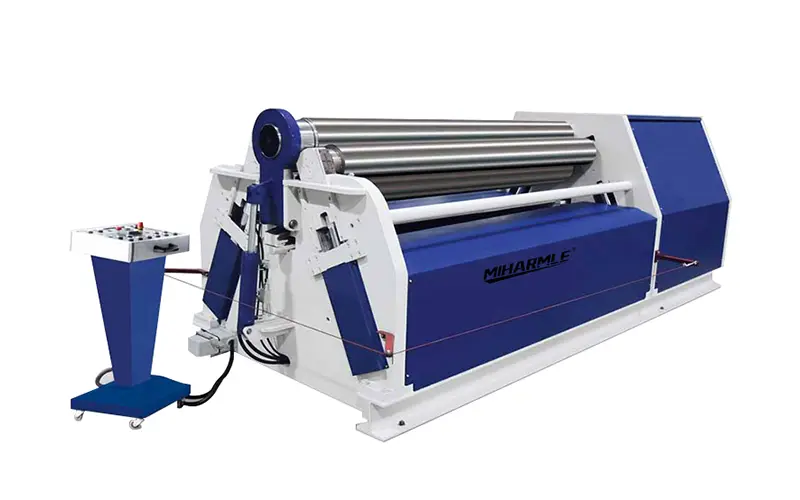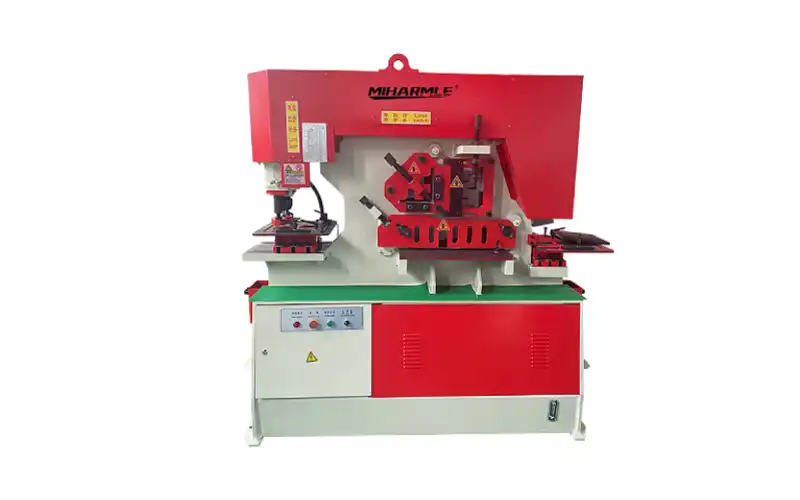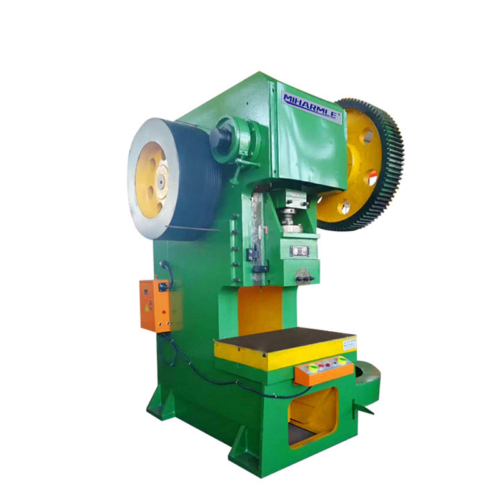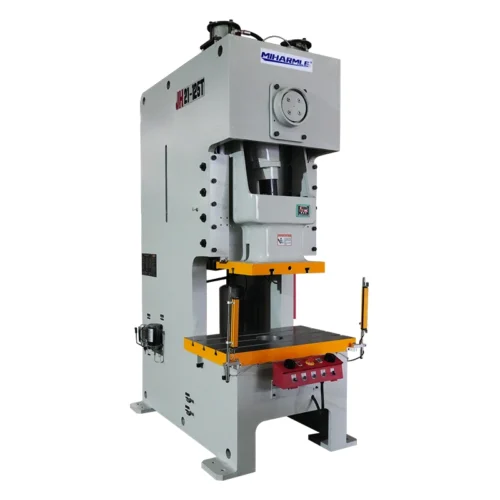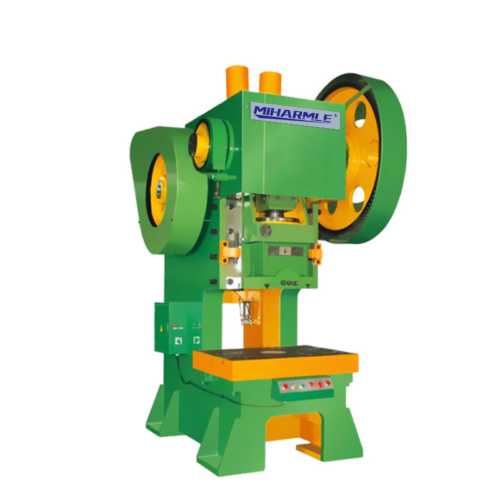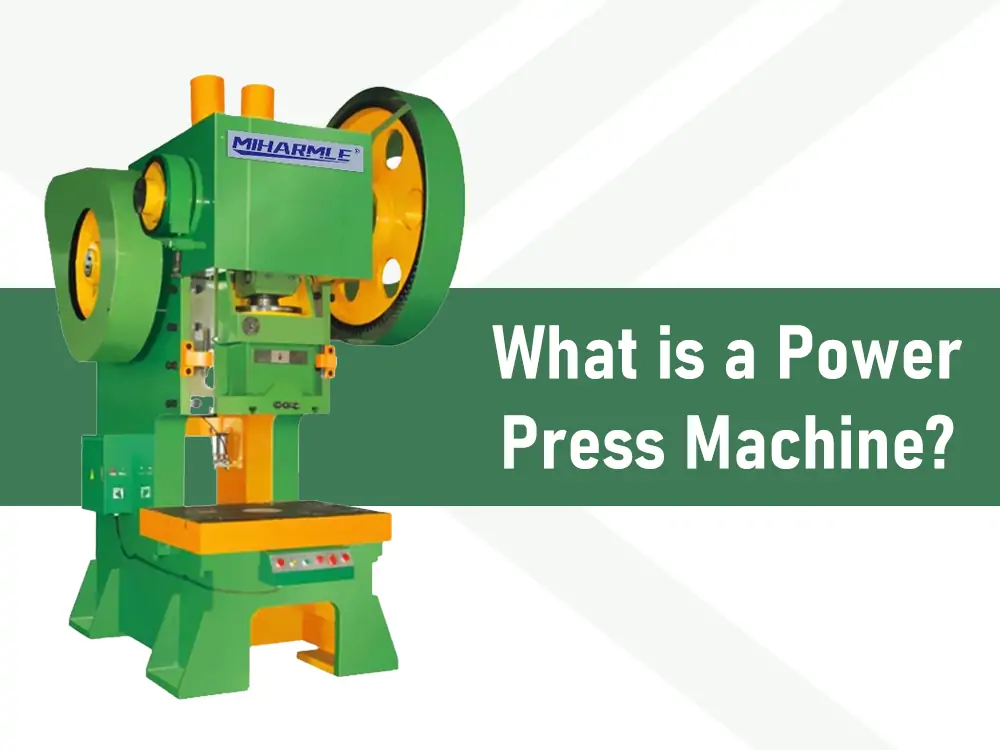
What is a Power Press?
A power press is a powerful machine for metal shaping, cutting, or forming sheets through stamping. Its primary purpose is turning flat or pre-formed base materials dies into precision parts by applying high-force compressive action. These machines deliver accurate and focused power ranging from a few tons to several thousand tons to execute different metalworking functions such as stamping, blanking, punching, and forging. They are versatile tools that maintain continuous, high-quality mass manufacturing of metal parts across various fields.
Main Parts of the Power Press
Base:
A sturdy foundation made of cast iron or welded steel that supports all press components and absorbs operational forces.
Ram:
The ram is a key part of mechanical power press machines. It helps reshape workpieces. It slides vertically on guides, holds the upper die, and performs the pressing action. It controls its stroke length and force, which can be adjusted as per the requirement. The punch at the bottom of the ram interacts with the workpiece. It cuts and forms the material. Precise alignment is crucial for accurate production and die protection.
Flywheel:
A heavy rotating wheel that stores energy from the motor and maintains consistent speed. The flywheel sits on the driving shaft. It connects through a clutch. This setup allows for precise control of energy transfer and machine performance. This helps with pressing operations and smooths power delivery.
Clutch:
It controls power transmission between the flywheel and crankshaft. It is crucial for halting the ram’s movement. It transfers the flywheel’s stored torque to the gear shaft, allowing the machine to start or stop operations as needed. Available in mechanical or pneumatic designs, it enables precise operation control in single-stroke or continuous modes.
Brakes:
Works with the clutch to stop ram movement quickly and accurately. When the clutch disengages, the brake engages to halt ram motion, ensuring both safety and precision in operations. Machines operate using two primary braking systems. The standard brake functions to stop the driven shaft quickly when the flywheel disengages. Emergency brakes work by foot control. A power-off switch allows for an instant stop, halting the machine completely.
Power Press Machine Working
The working principle of a Power Press Machine follows a systematic process that converts rotational motion into linear motion to generate force.
The electric motor utilizes power to rotate the flywheel for energy storage. The activation of a clutch connects the flywheel to the turning crankshaft to move a ram up and down.
A workpiece is placed into the die, and the tool cycle starts. The ram, attached to the upper die, slams into the workpiece over a stationary lower die. This action punches holes, bends edges, or stamps shape into the material. Once the downstroke is done, the operator removes and replaces the completed piece to keep the process moving.
Here’s a step-by-step breakdown of its operation:
- Energy Generation & Transfer
The assembly combines an electric motor to operate a flywheel that accumulates rotational power. The activation of the clutch enables the flywheel to join with either a crankshaft or eccentric shaft. A crankshaft converts its rotary motion into vertical movement. This action drives a ram (or slide) up and down.
- Force Application
The ram, with its upper die, moves down quickly. It presses the workpiece against the fixed lower die. This force (measured in tonnage) deforms, cuts, or shapes the material. Common operations include:
- Blanking (cutting flat shapes),
- Piercing (creating holes),
- Bending (forming angles),
- Deep drawing (stretching into 3D shapes).
- Cycle Completion
It retracts automatically after the ram reaches the bottom of its stroke (pre-set travel distance). Springs, air blasts, or ejectors release the finished part from the die. The flywheel recharges energy, and the cycle repeats for continuous production.
Key Variations in Operation
- Mechanical Presses: They use flywheel-crankshaft systems for quick, repeated strokes. They perform more than 100 strikes within each minute through their operation. These devices produce effective production of basic components, including washers, when manufactured on a large scale.
- Hydraulic Presses: The hydraulic system operates through a pump that pushes fluid oil into a cylinder. Pressure from the pumping oil drives a piston that activates either direct components or linked mechanisms. They provide slow, adjustable force and stroke control. This makes them ideal for complex tasks, such as molding automotive panels.
Types of Power Press Machines
C-Type Power Press Machines
Also known as gap frame presses, the gap frame press design presents three-dimensional accessibility to the work area because its C-shaped frame allows access across multiple sides. These machines are suitable for lightweight operations alongside minimal workpieces. The open design allows for better material handling. However, due to the frame’s flexibility under load, it limits the press capacity.
H-Type Power Press Machines
They are also called straight-side presses. This type has a rigid H-shaped frame, providing superior strength and stability. The closed frame design allows for higher tonnage operations and better accuracy. They’re preferred for heavy-duty applications and precision work, though access to the work area is more limited.
Hydraulic Power Press Machines
These use hydraulic fluid pressure to generate force instead of mechanical means. The main advantage is variable pressure control and full force availability throughout the stroke. They offer smoother operation, adjustable speed, and better force control. They are suitable for deep drawing and forming operations where consistent pressure is crucial.
Mechanical Power Press
These conventional mechanical power press machines employ motor-powered flywheels with mechanical linkage systems for force production. These machines produce force at higher operational speeds than hydraulic power presses while requiring less energy for operation. Best suited for high-volume production and operations requiring consistent stroke length. The force varies through the stroke, being greatest near the bottom.
Applications of Power Press Machines
Metal Forming Operations
The process of shaping sheet metal into intricate forms excels with power presses. The automotive sector relies on power presses to stamp body panels and fenders. It also processes structural components. These machines are precise. Seamless metal containers alongside appliance housings result from deep drawing operations performed by these machines. These machines play a vital role in manufacturing daily necessities such as coins and medals, as well as kitchen-related products.
Assembly Applications
In assembly lines, power presses perform critical joining operations. They do tasks like riveting parts together, inserting bearings with careful force, and press-fitting components. These machines are very useful in automotive and electronics assembly. They join components reliably and keep tight tolerances.
Cutting and Punching
Precision cutting and punching operations define another key application area. Power presses efficiently create precise holes, shapes, and perforations in metal sheets. They are crucial for making parts like washers, brackets, and industrial components. Clean cuts and precise dimensions are key here.
Consumer Goods Production
The consumer goods sector heavily relies on power presses. They produce components for home appliances, electronics housings, and bathroom fixtures. These machines make furniture parts and complex pieces for different household items. They ensure high quality during mass production.
Specialized Industries
High-precision industries, such as aerospace and medical device manufacturing, rely on power presses. These machines help form specialized components. They are essential for crafting complex military parts, precise watch components, and tough agricultural equipment parts. Accuracy and toughness are key in these areas.
What are the benefits of Power Press Machines?
- The traditional manual methods that were needed to shape, cut, and assemble metal parts were very labor-intensive. Power presses have now eliminated these manual procedures because they work autonomously to save time and employees.
- They are compact and adaptable. So, they can be easily relocated within a workspace to suit evolving project demands.
- These machines keep workpieces secure. This means you don’t have to reposition them often while working. Power presses are easy to use. They have simple controls that make tough tasks simpler.
- Power presses feature durable frames combined with accurate components for long-term operational reliability.
- The power press system needs a low initial investment. It also has simple maintenance requirements. Such technology serves both small workshops and large factories with an efficient cost-saving approach.
- Their efficient punching and pressing mechanisms rarely require repairs, reducing downtime.
Safety Measures While Using a Power Press Machine
Safety remains the top priority for all personnel who operate power press machines. Some safety measures are as follows:
- All operators must use the correct Personal Protective Equipment. These gears include protective items. You need glasses, steel-toed shoes, and well-fitting gloves. These gloves help prevent getting caught in machines.
- All personnel who work with the equipment require complete training along with certification. They should understand how to operate the machine and know all safety protocols, including lockout/tagout procedures during maintenance.
- Assign a designated operator to oversee maintenance and check for damaged components or worn-out tools. Ensure that emergency stop buttons are easily accessible.
- Always post clear work instructions near the machine for easy reference.
Price Of Power Press Machine
Power press machines typically range from $5,000 for basic to over $200,000 for heavy-duty 200+ ton industrial units. Costs depend on tonnage (force capacity), automation (CNC/robotic features), and brand. Hydraulic power press machines typically cost more than mechanical ones due to precision controls. Add-ons like safety systems, custom dies, and installation further increase expenses.
Conclusion
Power press machines drive modern manufacturing, turning raw metal into precise parts for cars, planes, and appliances. These machines rely on parts like the ram and flywheel to punch, bend, or shape materials quickly and consistently. Mechanical types excel at high-speed tasks, while hydraulic power presses handle complex, heavy-duty jobs.
Every operation requires complete safety through protective barriers and emergency stopping systems and qualified staff reductions of incidents. These rugged machines stay operational through regular maintenance, which avoids costly downtime. Power presses handle fast, reliable production in workshops and factories of multiple sizes that produce high-quality parts for large-scale industries.
